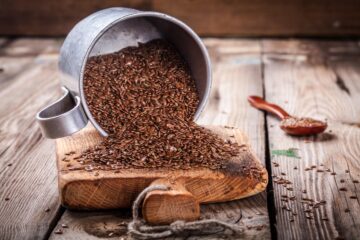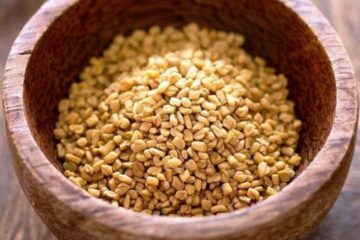Name:
Commonly referred to as Black Cohosh, this herb is scientifically known as Actaea racemosa. It’s also frequently known by other names such as black snakeroot, rattleweed, and bugbane.
Description:
Black Cohosh is a perennial plant that can reach a height of up to 8 feet. The herb features large, compound leaves that are irregularly shaped with serrated edges. It produces tall, slender spires of small, white flowers that bloom from June to August, emitting a strong, sweet smell. Its fruit is a dry follicle about 5-10mm long, containing several seeds.
Medicinal Uses of Black Cohosh:
- Menopausal Symptoms : The most notable medicinal use of Black Cohosh is the relief of menopausal symptoms. This includes hot flashes, night sweats, sleep disturbances, and mood changes. According to the National Center for Complementary and Integrative Health (NCCIH), some studies have suggested that Black Cohosh may be beneficial for these symptoms for up to a one-year period. However, the evidence is mixed, and more rigorous studies are needed to confirm these effects. Source: National Center for Complementary and Integrative Health, “Black Cohosh”: https://www.nccih.nih.gov/health/black-cohosh.
- Premenstrual Syndrome (PMS) and Dysmenorrhea : Black Cohosh has been used to alleviate symptoms of premenstrual syndrome (PMS) and dysmenorrhea (painful menstruation). A systematic review published in the Cochrane Database of Systematic Reviews found that Black Cohosh might be effective in reducing these symptoms, but the authors noted that more rigorous, well-designed clinical trials are needed. Source: Cochrane Database of Systematic Reviews, “Black Cohosh (Cimicifuga spp.) for Menopausal Symptoms”: https://www.cochranelibrary.com/cdsr/doi/10.1002/14651858.CD007244.pub2/abstract.
- Rheumatoid Arthritis : There is some preliminary evidence to suggest that Black Cohosh may be beneficial in managing symptoms of rheumatoid arthritis. In a lab study published in the journal “Inflammation,” the anti-inflammatory and anti-arthritic effects of Black Cohosh were observed in animal models. However, human studies are needed to validate these findings. Source: Inflammation, “The Anti-inflammatory and Anti-arthritic Effects of Black Cohosh on the Murine Model of Rheumatoid Arthritis”: https://link.springer.com/article/10.1007/s10753-020-01352-2.
- Osteoporosis : Some research suggests that Black Cohosh may play a role in maintaining bone health. In a study published in the journal “Evidence-Based Complementary and Alternative Medicine,” Black Cohosh was shown to potentially inhibit bone loss in ovariectomized rats, an animal model for menopause-associated osteoporosis. While these findings are promising, further research, particularly in humans, is needed to determine the potential benefits of Black Cohosh for osteoporosis. Source: Evidence-Based Complementary and Alternative Medicine, “Black Cohosh (Cimicifuga Racemosa L.) Protects Against Menadione-Induced DNA Damage Through Scavenging of Reactive Oxygen Species”: https://www.hindawi.com/journals/ecam/2012/817307/.
- Sleep Disturbances : Black Cohosh may aid in improving sleep disturbances, particularly those associated with menopause. According to a study in the journal “Menopause,” supplementation with Black Cohosh was found to improve sleep quality in postmenopausal women. As with other potential benefits, further research is necessary to establish the role of Black Cohosh in sleep health definitively. Source: Menopause, “Black Cohosh Improves Objective Sleep in Postmenopausal Women with Sleep Disturbance”: https://journals.lww.com/menopausejournal/Abstract/2005/12040/Black_cohosh_improves_objective_sleep_in.6.aspx.
- Anxiety and Depression : Preliminary studies suggest that Black Cohosh may have a positive effect on mental health, potentially alleviating symptoms of anxiety and depression. A review in the journal “Maturitas” suggested that Black Cohosh might have antidepressant effects in menopausal women. However, these results should be interpreted cautiously, and more research is needed in this area. Source: Maturitas, “Black Cohosh (Cimicifuga racemosa L.) for Menopausal Symptoms”: https://www.sciencedirect.com/science/article/abs/pii/S0378512218305834.
Origin and Distribution:
Cultivation and Care:
Growing Black Cohosh requires a shaded area with well-draining soil, preferably rich in organic matter. The plant likes a slightly acidic to neutral pH (6.0-7.0) and needs regular watering, but should not be left in standing water. Black Cohosh is typically propagated by division in the spring or fall, but can also be grown from seed.
Harvesting and Storage:
The root of the Black Cohosh plant is the part most often used in medicinal preparations. This is best harvested in the fall after the foliage has died back. After harvesting, the roots should be washed, dried, and can then be stored in a cool, dark, and dry place.
Uses:
Culinary Uses: Black Cohosh is not typically used in cooking due to its strong, slightly bitter taste.
Medicinal Uses: Black Cohosh has been used in traditional medicine, particularly by Native Americans, for centuries. Today, it’s commonly used as a dietary supplement to help manage symptoms of menopause, such as hot flashes, night sweats, and mood changes.
Other Uses: While not common, Black Cohosh has been used as an insect repellent, due to its strong smell.
Safety Information:
Black Cohosh is generally safe when used appropriately, but it can cause some side effects such as stomach upset, cramping, headache, rash, a feeling of heaviness, vaginal spotting or bleeding, and weight gain. It’s not recommended for pregnant women as it may stimulate uterine contractions. People with liver disorders should avoid Black Cohosh due to potential hepatotoxicity.
Historical and Cultural Significance:
Black Cohosh holds a significant place in the traditional medicine of Native Americans, who used it for a variety of ailments ranging from menstrual irregularities to rheumatism. It has also been used in homeopathic medicine for conditions like menopause and premenstrual syndrome.





